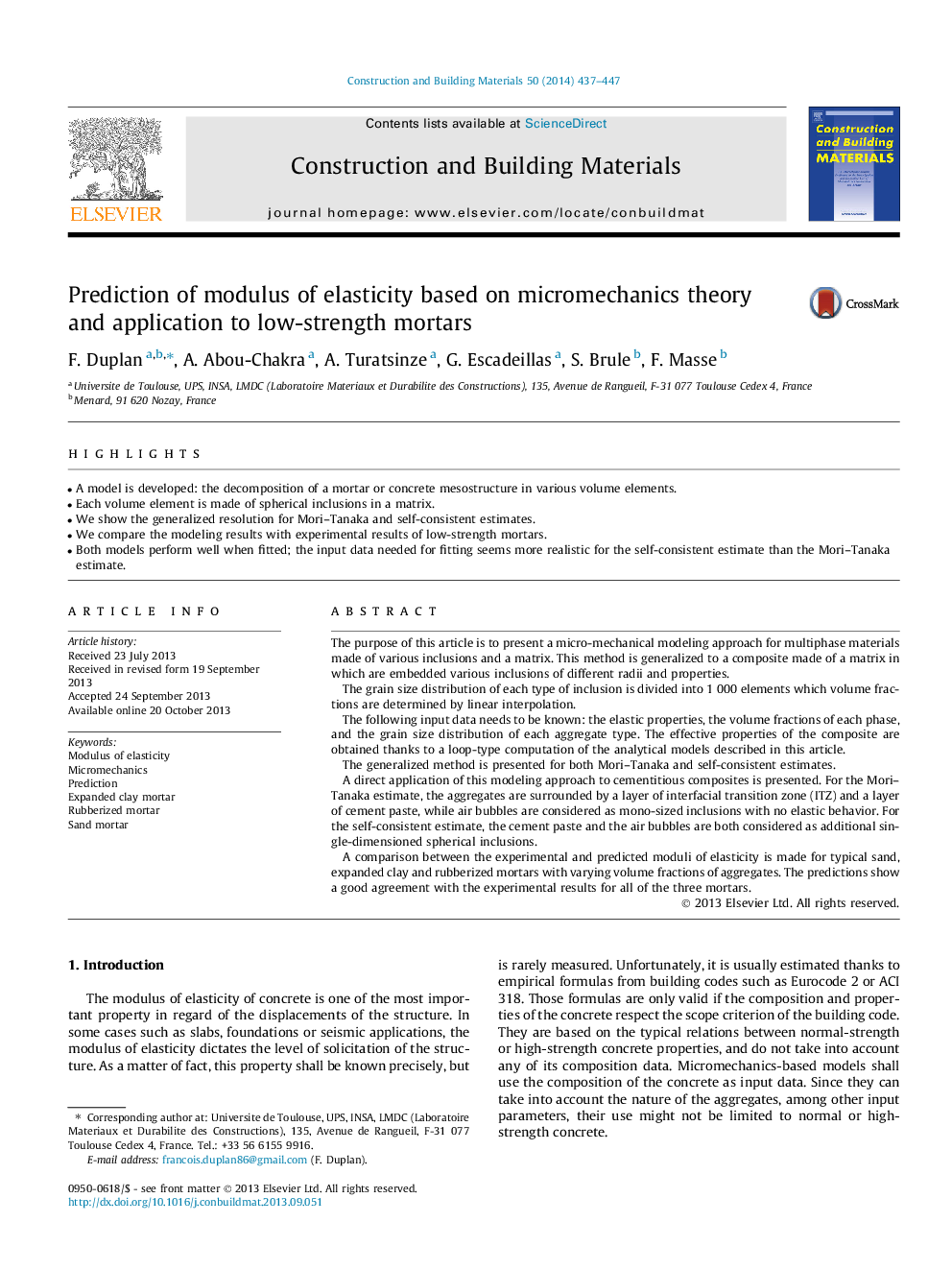| کد مقاله | کد نشریه | سال انتشار | مقاله انگلیسی | نسخه تمام متن |
|---|---|---|---|---|
| 257903 | 503602 | 2014 | 11 صفحه PDF | دانلود رایگان |
• A model is developed: the decomposition of a mortar or concrete mesostructure in various volume elements.
• Each volume element is made of spherical inclusions in a matrix.
• We show the generalized resolution for Mori–Tanaka and self-consistent estimates.
• We compare the modeling results with experimental results of low-strength mortars.
• Both models perform well when fitted; the input data needed for fitting seems more realistic for the self-consistent estimate than the Mori–Tanaka estimate.
The purpose of this article is to present a micro-mechanical modeling approach for multiphase materials made of various inclusions and a matrix. This method is generalized to a composite made of a matrix in which are embedded various inclusions of different radii and properties.The grain size distribution of each type of inclusion is divided into 1 000 elements which volume fractions are determined by linear interpolation.The following input data needs to be known: the elastic properties, the volume fractions of each phase, and the grain size distribution of each aggregate type. The effective properties of the composite are obtained thanks to a loop-type computation of the analytical models described in this article.The generalized method is presented for both Mori–Tanaka and self-consistent estimates.A direct application of this modeling approach to cementitious composites is presented. For the Mori–Tanaka estimate, the aggregates are surrounded by a layer of interfacial transition zone (ITZ) and a layer of cement paste, while air bubbles are considered as mono-sized inclusions with no elastic behavior. For the self-consistent estimate, the cement paste and the air bubbles are both considered as additional single-dimensioned spherical inclusions.A comparison between the experimental and predicted moduli of elasticity is made for typical sand, expanded clay and rubberized mortars with varying volume fractions of aggregates. The predictions show a good agreement with the experimental results for all of the three mortars.
Journal: Construction and Building Materials - Volume 50, 15 January 2014, Pages 437–447
